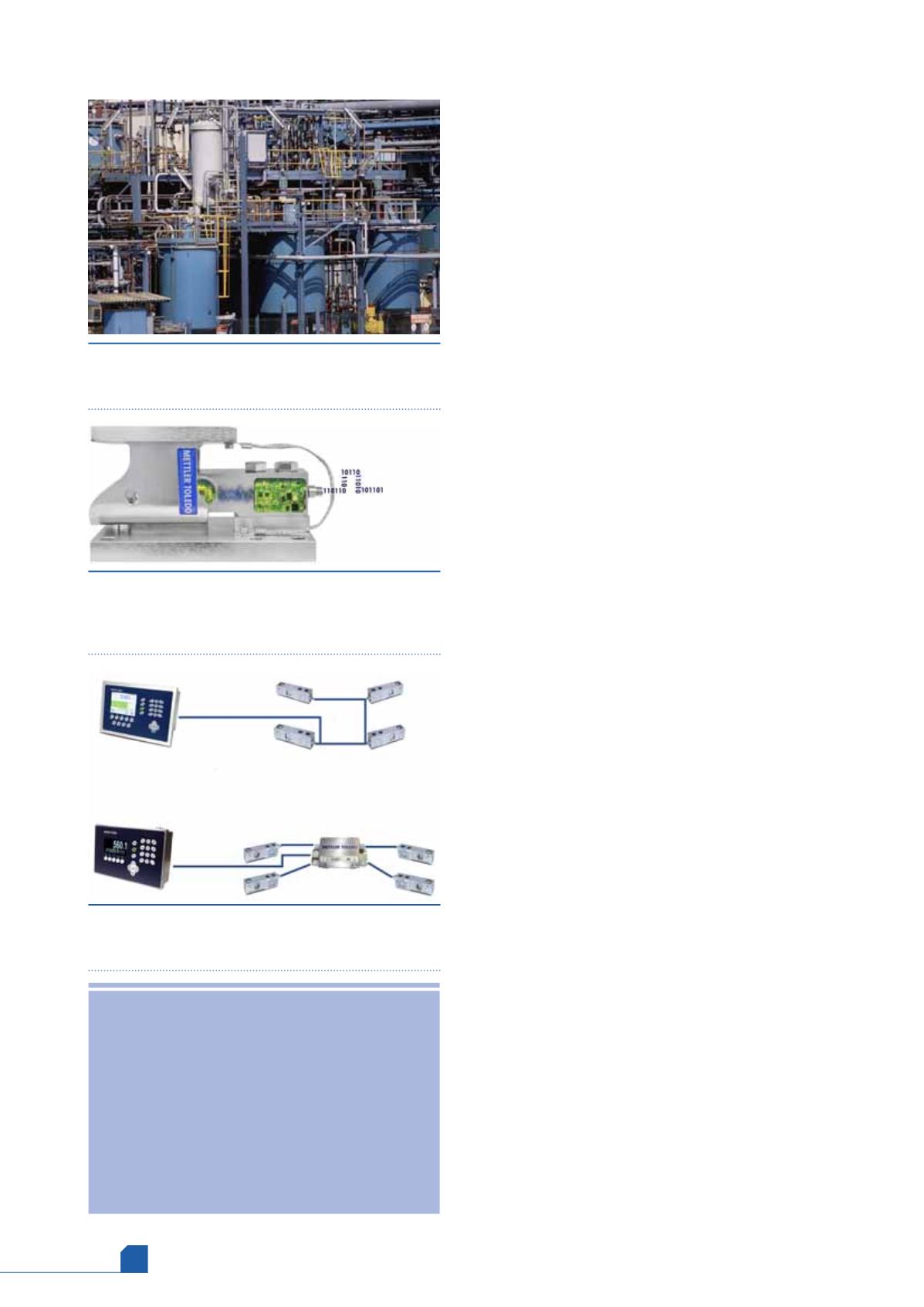
March
2017
HYDROCARBON
ENGINEERING
94
processing integrated with analogue-digital conversion.
The analogue to digital conversion is performed directly
at the physical process or ‘actual working point’. This
eliminates the error prone transmission of analogue
values over distance and environmental factors, such as
temperature changes and vibrations. In addition, the
microprocessor corrects the linearity error of mechanics
and electronics. Thanks to these features, strain gauge
technology load cells with weight capacities from 100 kg
to 100 t achieve a previously unheard of accuracy of
10 000 points according to the Organisation
Internationale de Métrologie Légale (OIML) or National
Type Evaluation Programme (NTEP).
Enabling predictive maintenance
The intelligence in the load cell also allows continuous
analysis of the weighing process. This means a gradual loss
of performance in a load cell can be identified, and, once
identified, reported to the control system. This is a
prerequisite for the implementation of the sensor in an
Industry 4.0 environment. In contrast, load cells with
analogue value transmission provide, at best, a general fault
message. This means that only manual troubleshooting on
site can determine which load cell is affected. Moreover, a
gradual decline in performance of a single load cell is not
recognisable.
This ability to monitor performance may be particularly
helpful in the process industry where the scale is a critical
sensor. This is because false weights and load cell
disturbances have a significant impact on quality and cost.
Unlike a manual weighing process where an operator that
can respond appropriately is present, failures often go
unnoticed in automated processes. Here, a direct message
to the control system, or to the mobile phone of the
production manager, is crucial for rapid troubleshooting.
Remote diagnostics can also be useful for machine
builders. With this function, the builders will be informed
during the warranty period if there is interference to the
system supplied to an end user. If interference occurs, the
client can be asked to carry out a site inspection or
intervene appropriately.
Additionally, when an intelligent load cell detects loss of
performance, it can alert the operator that preventative
maintenance is needed to allow cleaning or removal of other
disturbance factors. If a load cell fails, it can be replaced
quickly thanks to stored calibration data. In contrast to
analogue technology, the digital load cell can also be
replaced at a faster rate, and more easily, as digital plug and
play connections do not require the replacement of cabling.
Easier commissioning and operation
A weighing installation should be calibrated after
installation is completed to benefit from the typically
superior accuracy of weighing compared to alternative
technologies, such as flow meters or level sensors. Regular
calibration with test weights is the most precise and safest
of all calibration methods. Initial calibration at installation
with test weights is even necessary for processes with high
accuracy requirements and specific regulatory provisions.
For less demanding applications, the recommendation is to
Figure 1.
Tank weighing systems are often process
critical. Intelligent load cells avoid unplanned outages
before they occur.
Figure 2.
A weigh module with an integrated
microprocessor enables continuous process analysis.
They can detect a gradual performance decline over
time.
Figure 3.
Intelligent sensors with digital data transfer
can be daisy-chained and do not need a junction box
as traditional analogue weighing systems do.
What is Industry 4.0?
Industry 4.0, or the Fourth Industrial Revolution,
includes cyber-physical systems, including the 'Internet
of Things', and cloud computing. The term 'Industry 4.0'
originates from the high tech strategy of the German
government to promote the computerisation of
manufacturing. However, the term and strategy has
been widely adopted by most European countries. For
US audiences, this may best be translated as the
'Internet of Things'.








